We were a few weeks into our experience of staying home–and I realized, my son’s birthday was coming fast, and it looked unlikely that we could have the usual birthday party with cousins, aunts, uncles and grandparents–let alone the sleepover with one of his best friends.
I considered just waiting–having his birthday party a couple weeks late. That would surely be better than no party at all, right? And yet, something told me, it wasn’t smart to count on even that option; we couldn’t really expect to know anything at even that distance away.
I began to wonder–what about a virtual party? I’d recently begun learning how to operate a classroom online through my own part-time job leading educational seminars in the homeschool community. I’d been spending time how to use the features and play games. Could this be a platform for a birthday party for a kid?
Yes–of course it was easily an option to let people see each other, and to let family see my son blow out candles on his cake and open gifts. But that’s not much of a party. And some people are starving for socialization and connection. Was there more I could do on a platform like Zoom? Could we play games as I do with my students?
But I don’t normally host birthday parties with games. When we do family parties, there’s no need! We just talk and the kids play– no need for entrtainment. (That’s the what the kids are for!) I have a sister who always makes special games with prizes, but I’ve not done that except for my oldest’s five-year-old birthday party when we invited friends. BUT–the occasion seemed to call for doing things I don’t normally do…
My husband was focusing on really treating our son with the gifts–buying him things he really wanted and that we knew could give hours of play as we were stuck home. I guess my thought was similar–doing something a it over the top of our normal.
A specialty of mine in the classroom is adaptations of the game Clue. Could I use this for a birthday party? People guessing the names of person, a weapon and a room a crime takes place in?
What if it’s not murder, but something more fun and funny? Hence came the idea “Who Ate the Birthday Cake?” It was a silly story about my son’s birthday cake being eaten before the party–by a relative in attendance at the party. The task during the party is for all the guests to guess which relative(s) ate the cake, with what utensil, and in what room of our house.
I set up the game, emailed/texted guests what they needed, and shortly after everyone arrived on our Zoom birthday party call, we played. It worked great, it brought laughter, and family said afterward that it was fun and novel. and perhaps most telling, my husband said after that he had been skeptical that it would work, but he was pleasantly surprised that it really did.
At our party, it was my brother who guessed it–pinning the crime on our sister and her one-year-old son! He also correctly guessed that they at the birthday cake with chopsticks in my daughter’s bedroom. These games are funny because they are about the people at the party.
How to Set Up the Game
- Make a game card. I typed mine up in columns on Word, a column for people, another for utensils, and a third for rooms of the house. (Note, I use the “Header” feature to make a title and direction that span acorss the page, rather than split it into two columns.)
- You need to choose the people on the game card. I used each guest as a name, but it’s also okay to use people not present; it doesn’t mess up the game. I had a sister-in-law not in attendance, but we had her name in the game anyway. Click below to see the game card.
birthday game clue cake public
3. Next, I had to communicate with the party guests. I sent them emails to let them know of this game and sent them the game card. I didn’t give full instructions; I thought it would be less overwhelming to relatives to wait until we were together online. But I instructed them to print the game card and expect a text.
4. Next I had to add up the items on the game card: each person on the lists, each utensil and each location. I then randomly selected one item from each column–that was the answer to the mystery. the remaining items I had to divide evenly between the guests. (Depending on the number of people nad tiher ease with playing this knd of game, you may want to have each family unit play as one player. I was inviting my siblings and their familes plus two sets of grandparents. So, including my own family, I had 8 teams or “players.” So I divided the itesm up for 8 “players.”) On a game card of my own, I assigned 4 items to each guest by placing their initials next to the items.
5. I texted each guest team (family unit) earlier in the day and gave them their 4 assigned terms and told them to check them off on their game card.
7. Then I sent everyone a Zoom invite. (Having an account is necessary for a host, but not a guest; you may sign up for free right now, and that gives you 40 minutes. or you could pay for an account that gives unlimited time.)
8. Whenever everyone arrived at the Zoom party and we’d chit-chatted a bit, waiting for the entrie guestlist to arrive, I did the game first. I didn’t know how long it would take, and I wanted ot do it when the kids and adults were fresh.
Here’s our guests on Zoom, first time ever trying such a thing. They all arrived!
9. I explained the basic rules of playing Clue, with some alterations to make it work for our group online.
Alteration #1: When it’s your turn, guess one item fomr each column: people, utensil, location of the crime. the goal is to guess anything not yet checked off because those ones are eliminated, not the answer to the mysery of who ate the birthday boy’s cake.
Alteration #2: When someone makes a guess, the rest of the people should raise their hand if they have any of those words checked off on tiher paper. (Anytihng a player has on tiher game card cannot be the answer to the mystery.)
Alteration #3: HOWEVER, I put one cap on this–to slow the game down–after two people with raised hands have refuted someone’s guess about one item becuase they have it checked off on thier paper, we move ot the next turn. (Otherwise, things can go too fast. The original game limits this by allowing players ot ask only the player to one side of them in the circle; this is my way of achieving the same limit.)
Tip: I run this like a teacher because I am a teacher! i repeat what peope say to help move through confusion or sound or tech difficulties. I call on people for their turn, and I interact with peoples’ guesses with comments. The kids expecially think it is funny when someone accuses a certian uncle or cousin of eating the cake, so I ham it up a bit. I take everyopportunity for the potential for it to be funny and provide laughter. People in this time NEED laughteer. Get the kids to laugh about grammy and baby cousin Nelly eating cake with chopsticks or Pappy eating cake with a baby spoon or a shovel.
Goal: a player guesses each category’s answer all in one turn. (This rarely happens, though it did in our recent fmaliy party. If it dones’t, move ot thel ightning round.
Alteration #4: Lightening round: when people get fidgety or you see no end in sight, announce that it is the lightning round! Instruct guests that we will each make a final guess on one category at a time. So I then ask each team/player who they think did it, and I don’t say yes or no to anyone’s guess; I hear every player’s guess before I announce if anyone got a point for a correct guess as I reveal who it really was! I repeat with utensils, then with location, untl we know the whole answer. A team wins this way by having the most points, and points wre earned for having any category’s answer correct.
HOW TO DEFINE SUCCESS OF A GAME:
The game succeeded on two counts in our party: there was laughter and we engaged the guests. (Families with young kids couldn’t fully participate–there was jsut one adult playing with the other herded young kids! So consider the make-up of your attendees when choosing this game. It worked for most but not all guests.)
GIFTS
After, we had our son open gifts. (I’d asked relatives to send them ahead.) Cousins were epsecially invested to see what toys our son got. This translates easily to virtual party activities.
Right after gifts, I brought out the cake with lit candles. Ahead of time, I’d sent the invites that said BYOC–bring your own cake! And most guests really did–they had some form of cake to get out so we were all eating cake together–even if not the birthday boy’s cake.
My son blew out his candles and we ate cake, all huddled around the laptop on the coffee table.
Last, I had a game on hand if needed. I planned to use the Zoom shared whiteboard which allows drawing by any participant. However, some relatives were joining by only cell phone and they couldn’t access it. Even the birthday boy wasn’t interested, as he had been earlier, because suddenly his gifts were more interesting! But a couple of the younger cousins did play a simple drawing game with the aim for the family to guess what they were drawing. If it had been more formal, I’d have played it with the theme of drawing things that represent the borthday boy.
Our party took a little over an hour, perhaps? A few family members lignered bit longer. By all accounts, I think this was very successful, and our son said it was one of his favorite birthdays.

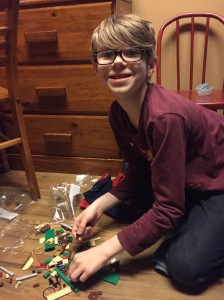
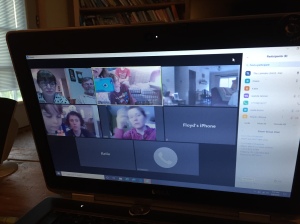
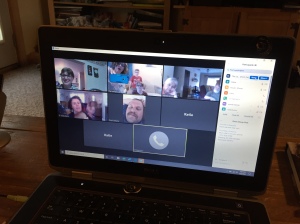
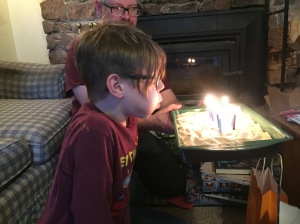
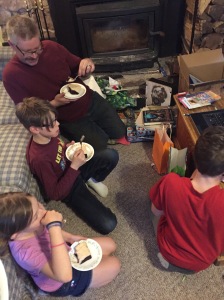


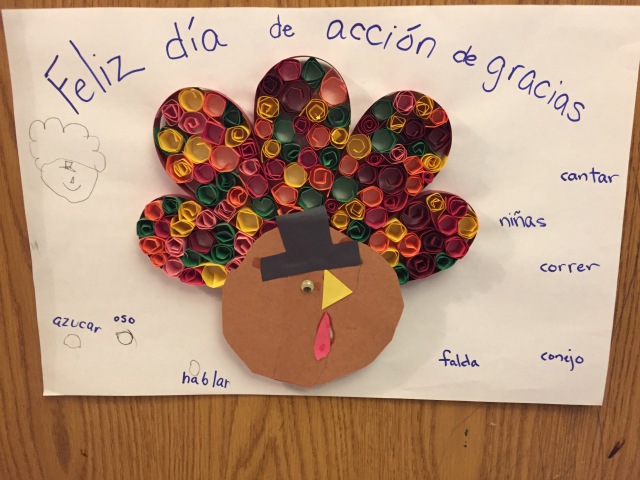
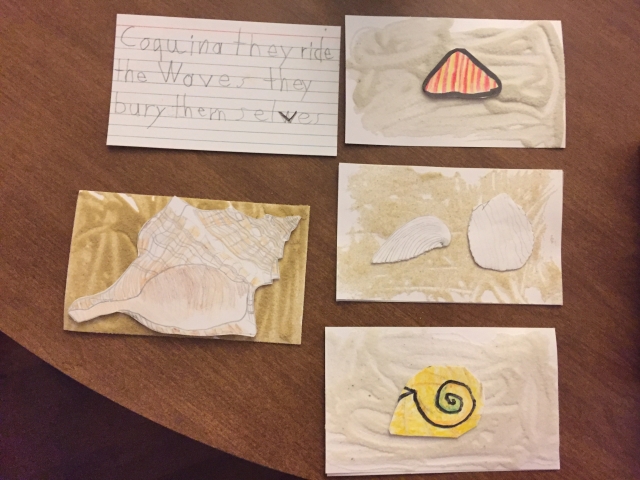 Just gluing sand was a novelty. I’d had sand in little baggies from a project from before kids…what a great way to use it.
Just gluing sand was a novelty. I’d had sand in little baggies from a project from before kids…what a great way to use it.

 Two shells in progress of mine, gray clay, on top of the awesome $1 book I found at a second-hand bookstore.
Two shells in progress of mine, gray clay, on top of the awesome $1 book I found at a second-hand bookstore.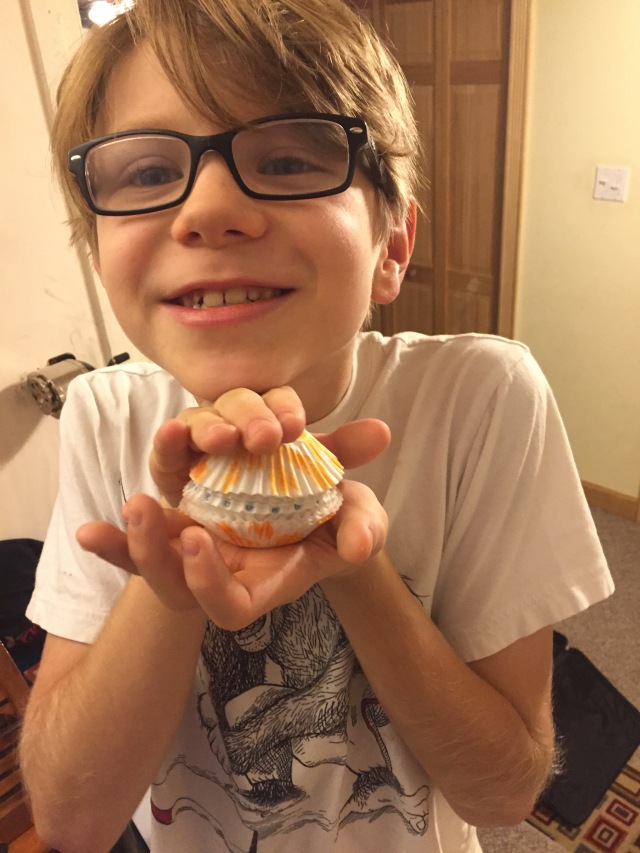 I had an idea to make a 3D scallop, but this kid had a different idea. I let him run with it, and here is his result: an orange calico scallop. The most fun was making the rows of blue eyes in the middle.
I had an idea to make a 3D scallop, but this kid had a different idea. I let him run with it, and here is his result: an orange calico scallop. The most fun was making the rows of blue eyes in the middle.
 We read that pen shells are often overlooked because they are unimpressively brown–but an under layer features pearly pastels
We read that pen shells are often overlooked because they are unimpressively brown–but an under layer features pearly pastels 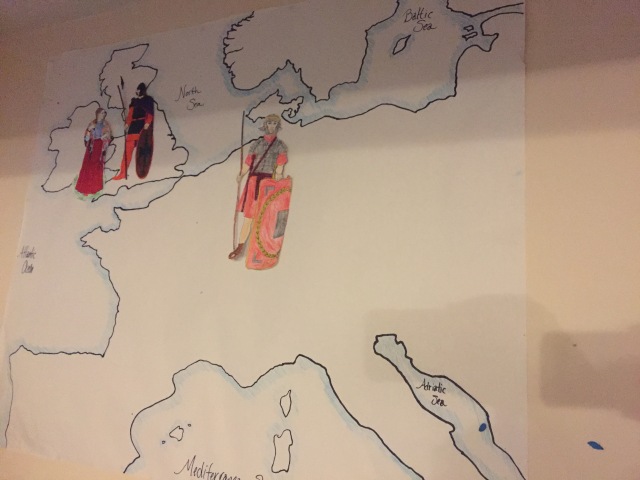

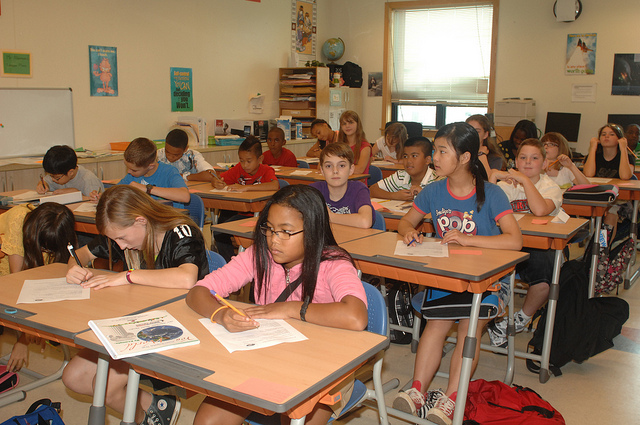

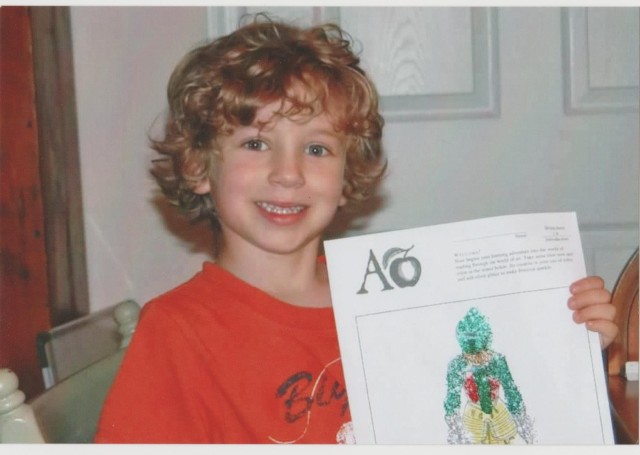
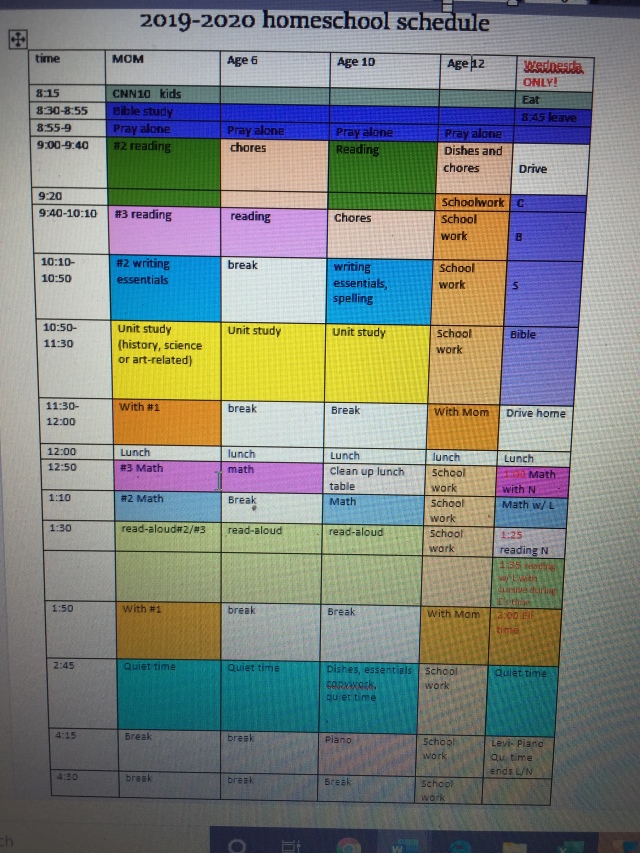
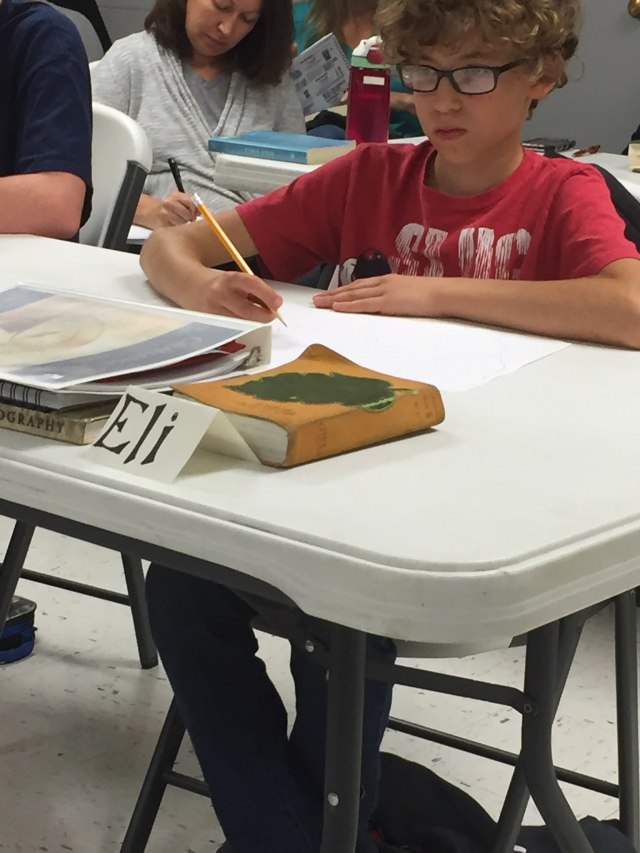

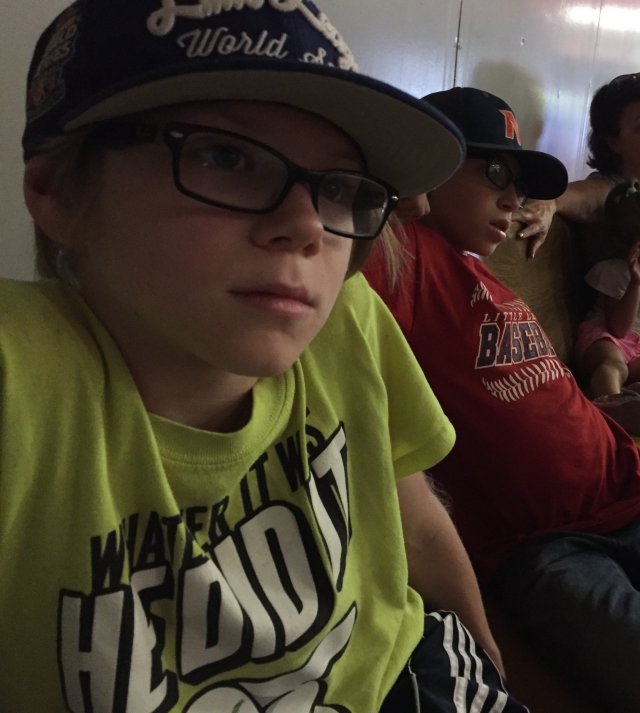
 I told the kids beforehand that if they wanted more snacks, I’d bring some, but they could also use their allowance money to buy their own. A couple choose to do the latter. (We’re trying to give the kids opportunities to spend or save money so they can practice weighing decisions.)
I told the kids beforehand that if they wanted more snacks, I’d bring some, but they could also use their allowance money to buy their own. A couple choose to do the latter. (We’re trying to give the kids opportunities to spend or save money so they can practice weighing decisions.)





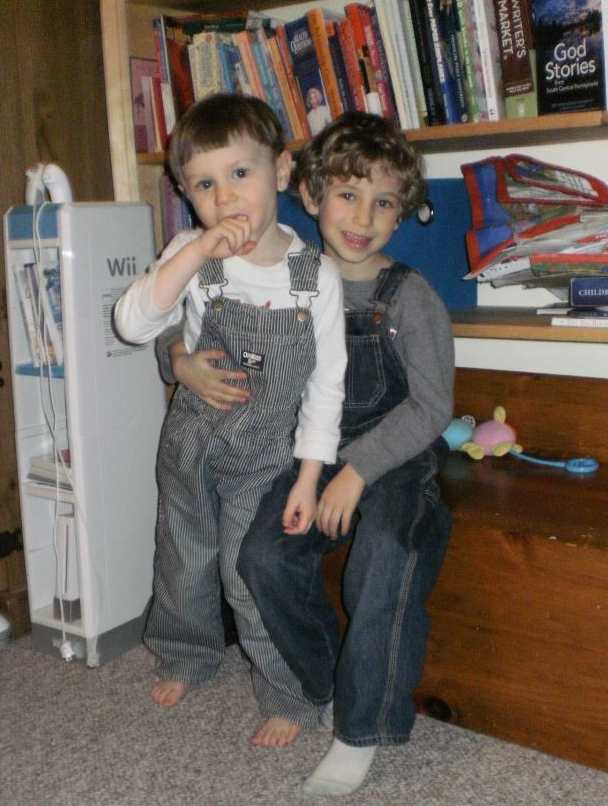 And yet, what I recall is the grace. The grace given to my son when he didn’t want to do his presentation (think Show and Tell). Grace given him when he shook his head no when asked to help hold up cards or pictures for memory work. Grace given to him when he didn’t want to take a turn in a game. He was not relegated to a second-class pupil because he was shy. He was not regarded as a trouble maker or unintelligent or a problem. He was loved patiently and for who he was and where he was in his development.
And yet, what I recall is the grace. The grace given to my son when he didn’t want to do his presentation (think Show and Tell). Grace given him when he shook his head no when asked to help hold up cards or pictures for memory work. Grace given to him when he didn’t want to take a turn in a game. He was not relegated to a second-class pupil because he was shy. He was not regarded as a trouble maker or unintelligent or a problem. He was loved patiently and for who he was and where he was in his development.
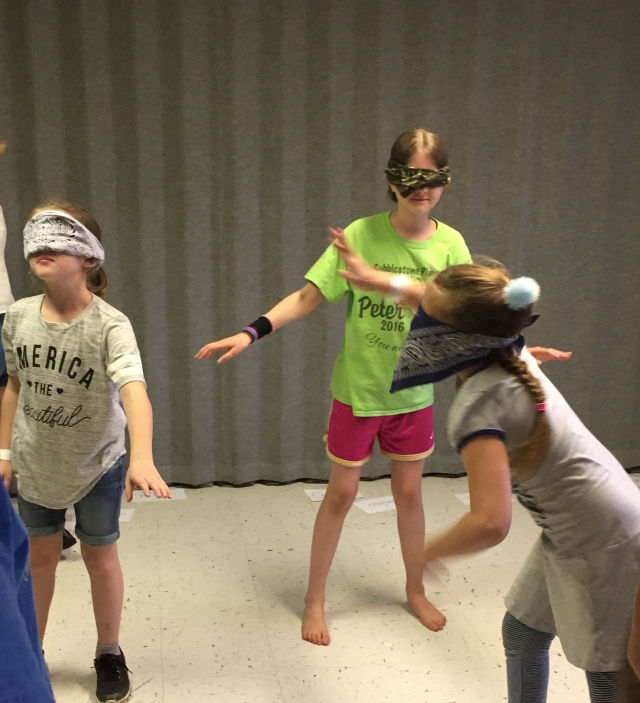
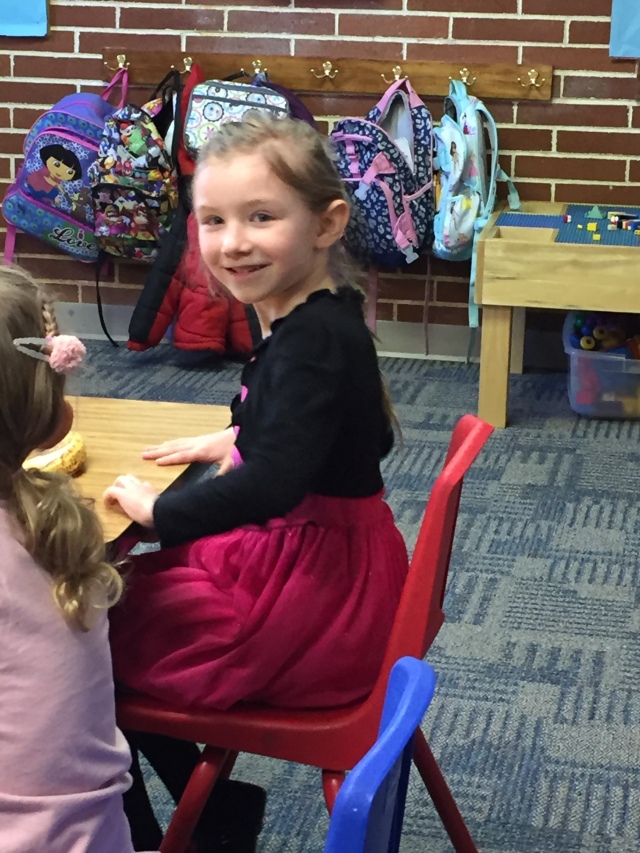




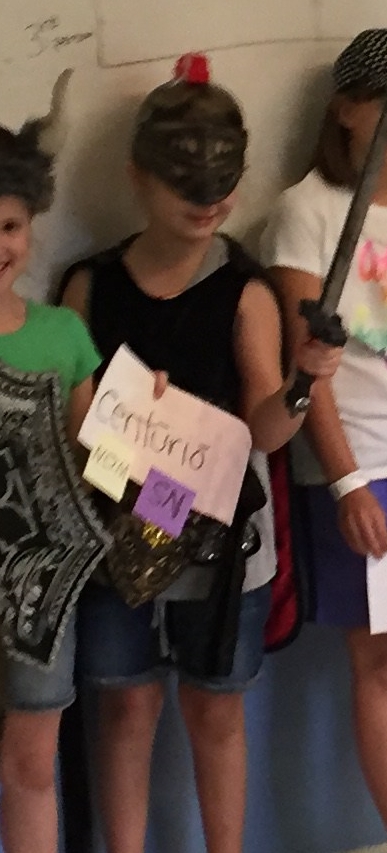 But fast forward to now and I’ve lead challenge A for two academic years, heading into my third, with my son in the class. A big appeal to me is the flexibility. I like accountability, or maybe, rather, I like things that motivate my kids with positive peer-pressure or a stake in a project. Knowing they will present or show someone other than just mom gets more engagement. He will put more time in it.
But fast forward to now and I’ve lead challenge A for two academic years, heading into my third, with my son in the class. A big appeal to me is the flexibility. I like accountability, or maybe, rather, I like things that motivate my kids with positive peer-pressure or a stake in a project. Knowing they will present or show someone other than just mom gets more engagement. He will put more time in it. 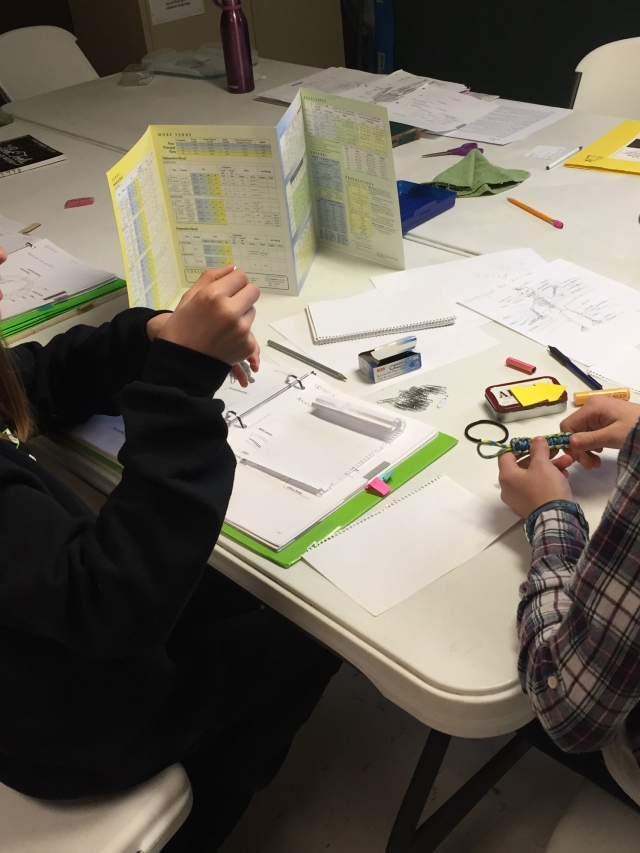 The Challenge program sets up ways for students to share, discuss and present that I’m looking for, but I still have the flexibility not inherent in other co-op classes. I get to choose the standard that he must meet; I get to choose our priorities in his education over-all as well as within each subject. Students in the program get a big syllabus for the year inside what’s called the Challenge A Guide. There are assignments listed for each week, as well as alternative ideas given to scale back or scale up. A family can join the program and engage at multiple levels, all of which allow the child to still participate and benefit from the community day together.
The Challenge program sets up ways for students to share, discuss and present that I’m looking for, but I still have the flexibility not inherent in other co-op classes. I get to choose the standard that he must meet; I get to choose our priorities in his education over-all as well as within each subject. Students in the program get a big syllabus for the year inside what’s called the Challenge A Guide. There are assignments listed for each week, as well as alternative ideas given to scale back or scale up. A family can join the program and engage at multiple levels, all of which allow the child to still participate and benefit from the community day together.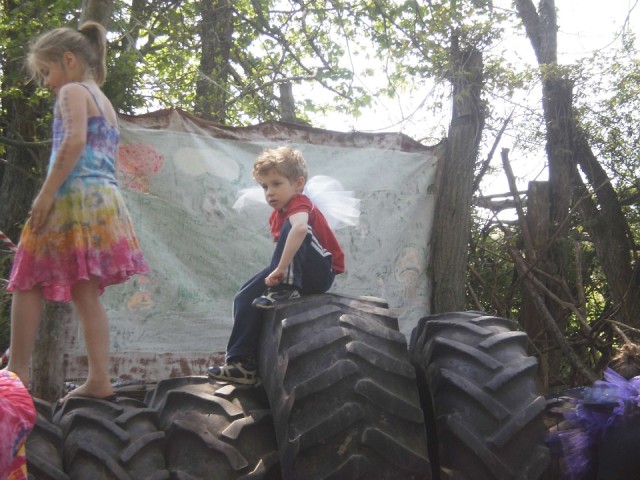

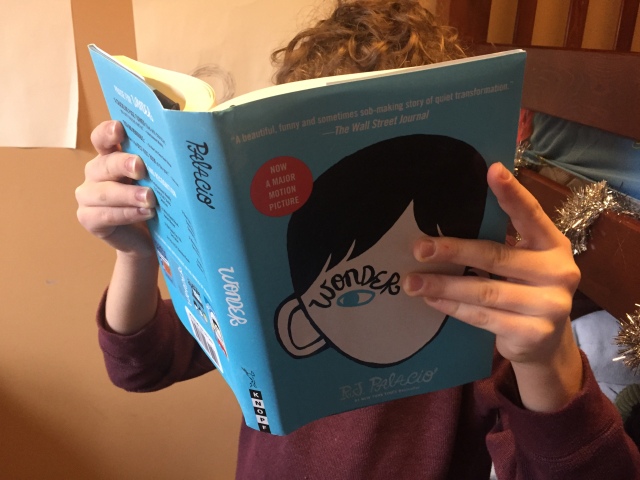
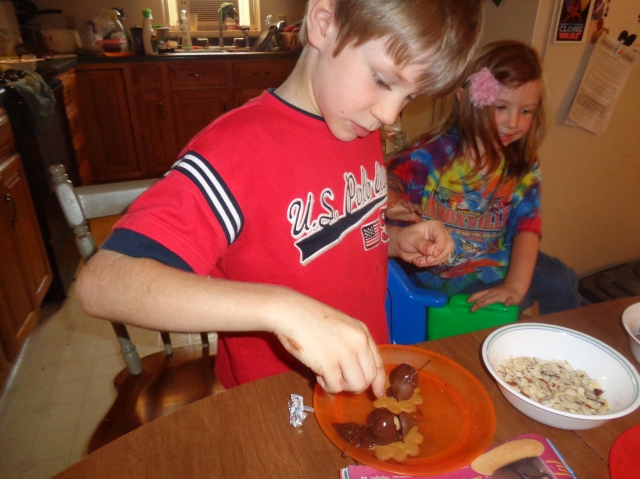
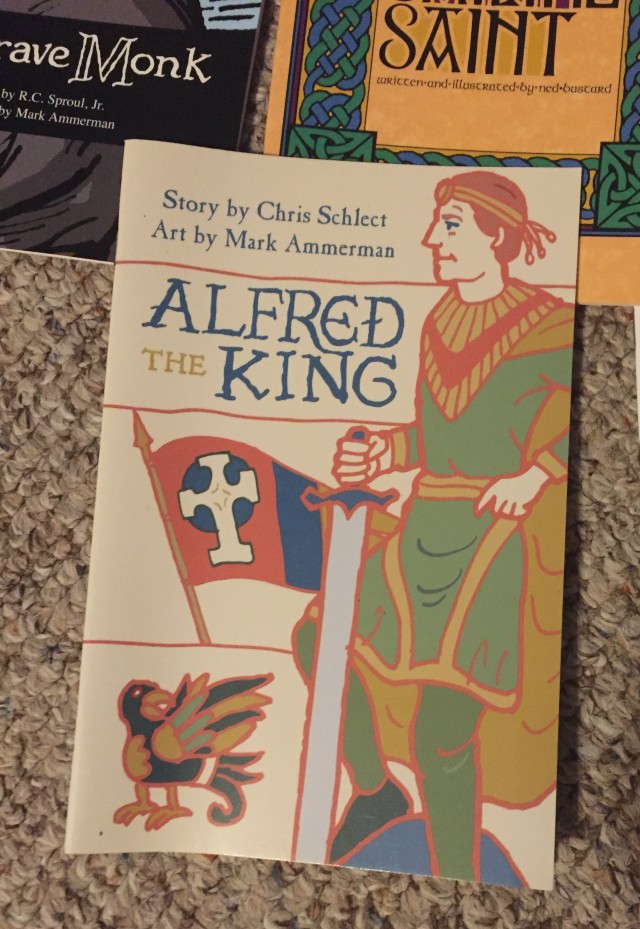





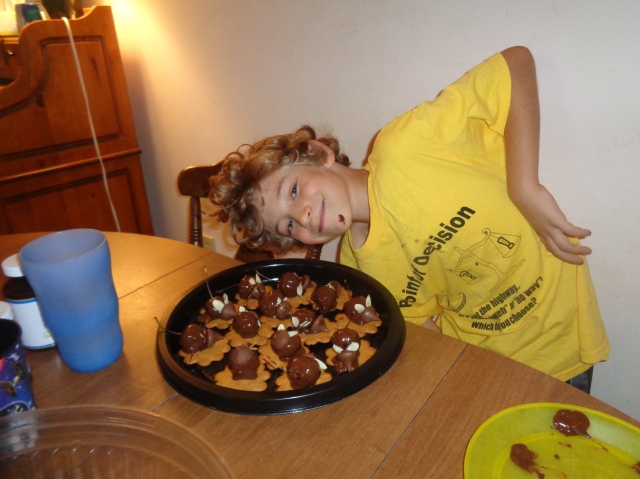
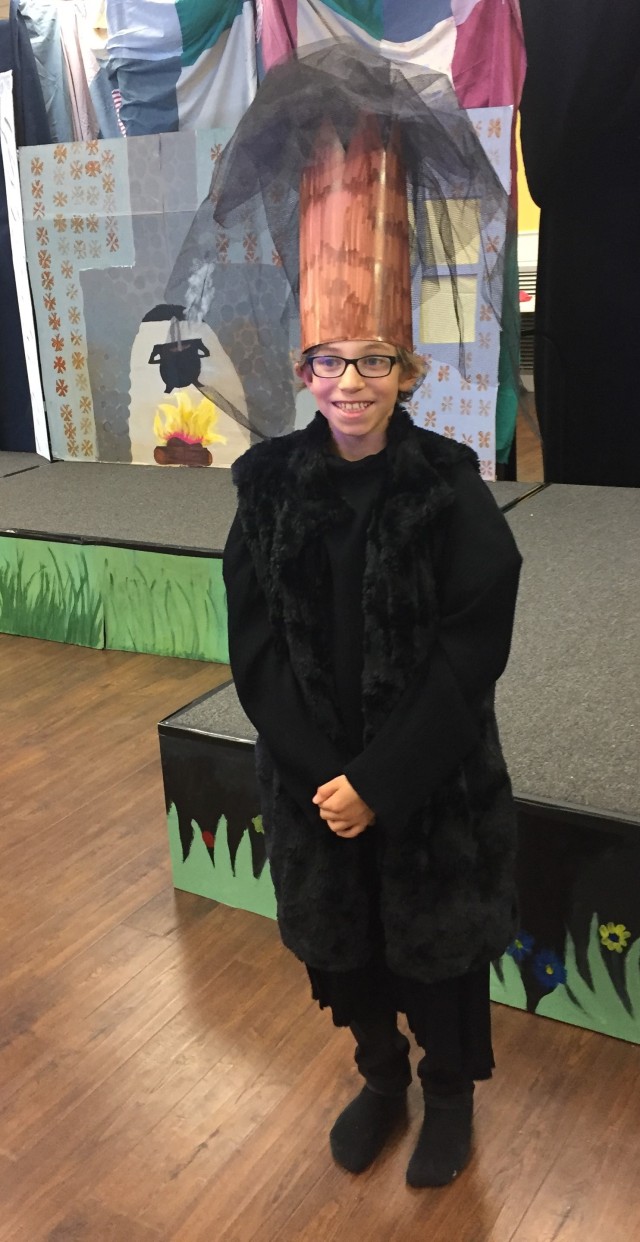

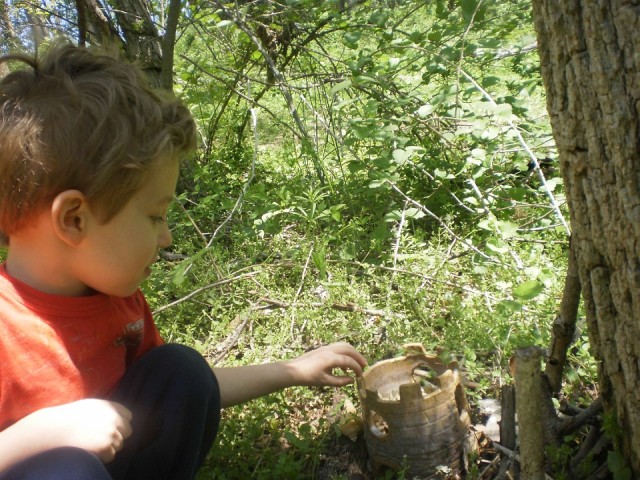 As I nursed babies and got through potty-training, here was my knowledge of homeschooling:
As I nursed babies and got through potty-training, here was my knowledge of homeschooling: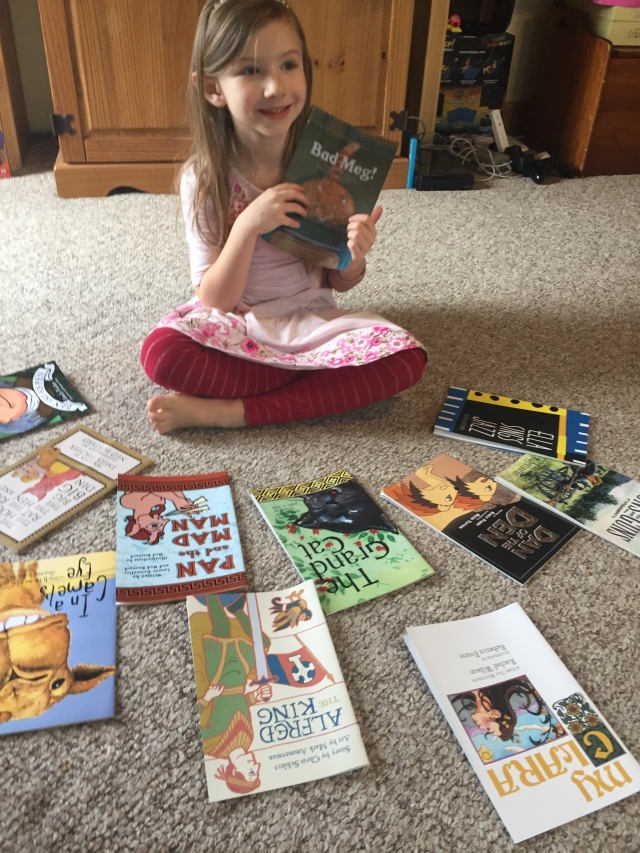


 I realized that if I homeschooled, I could choose the method of how to teach my child to read (and every other skill) and not be stuck with something I didn’t think best. I wasn’t constrained to parts of Common Core math that I likewise find developmentally out of line in the younger years.Likewise, the faith we were raising our children in wouldn’t be confined to how we taught them about the Bible during family devotions and at church; they could learn all subject and matters in life with the freedom to actively talk about how everything interfaced with God and our faith.And for that matter, we could do well what the chapter school for the gifted, at which I had worked, was trying to do: integrate all of learning rather than compartmentalize the subjects. It could all be fluid.8. Alterable. A decision for the start their education at home was not a final decision for their entire education. We could re-evaluate what was best for our boys every year.
I realized that if I homeschooled, I could choose the method of how to teach my child to read (and every other skill) and not be stuck with something I didn’t think best. I wasn’t constrained to parts of Common Core math that I likewise find developmentally out of line in the younger years.Likewise, the faith we were raising our children in wouldn’t be confined to how we taught them about the Bible during family devotions and at church; they could learn all subject and matters in life with the freedom to actively talk about how everything interfaced with God and our faith.And for that matter, we could do well what the chapter school for the gifted, at which I had worked, was trying to do: integrate all of learning rather than compartmentalize the subjects. It could all be fluid.8. Alterable. A decision for the start their education at home was not a final decision for their entire education. We could re-evaluate what was best for our boys every year.








